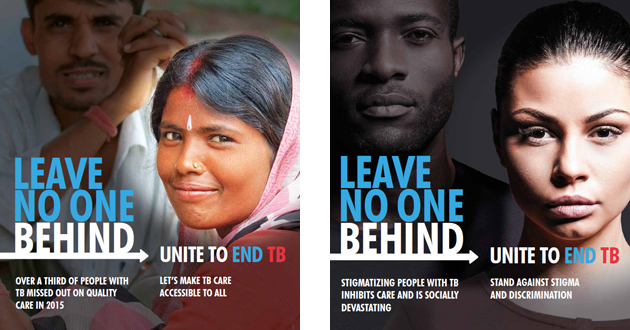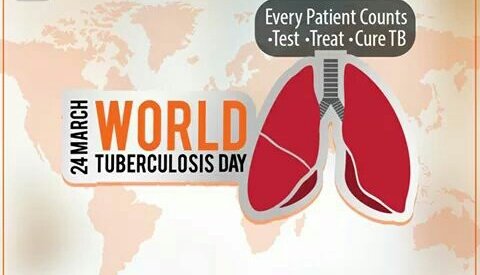Key facts
- Tuberculosis (TB) is one of the top 10 causes of death worldwide.
- In 2015, 10.4 million people fell ill with TB and 1.8 million died from the disease (including 0.4 million among people with HIV). Over 95% of TB deaths occur in low- and middle-income countries.
- Six countries account for 60% of the total, with India leading the count, followed by Indonesia, China, Nigeria, Pakistan and South Africa.
- In 2015, an estimated 1 million children became ill with TB and 170 000 children died of TB (excluding children with HIV).
- TB is a leading killer of HIV-positive people: in 2015, 35% of HIV deaths were due to TB.
- Globally in 2015, an estimated 480 000 people developed multidrug-resistant TB (MDR-TB).
- TB incidence has fallen by an average of 1.5% per year since 2000. This needs to accelerate to a 4–5% annual decline to reach the 2020 milestones of the “End TB Strategy”.
- An estimated 49 million lives were saved through TB diagnosis and treatment between 2000 and 2015.
- Ending the TB epidemic by 2030 is among the health targets of the newly adopted Sustainable Development Goals.
What is multidrug-resistant tuberculosis (MDR-TB) and how do we control it?
Q: What is multidrug-resistant tuberculosis and how do we control it?
A: The bacteria that cause tuberculosis (TB) can develop resistance to the antimicrobial drugs used to cure the disease. Multidrug-resistant TB (MDR-TB) is TB that does not respond to at least isoniazid and rifampicin, the 2 most powerful anti-TB drugs.
The 2 reasons why multidrug resistance continues to emerge and spread are mismanagement of TB treatment and person-to-person transmission. Most people with TB are cured by a strictly followed, 6-month drug regimen that is provided to patients with support and supervision. Inappropriate or incorrect use of antimicrobial drugs, or use of ineffective formulations of drugs (such as use of single drugs, poor quality medicines or bad storage conditions), and premature treatment interruption can cause drug resistance, which can then be transmitted, especially in crowded settings such as prisons and hospitals.
In some countries, it is becoming increasingly difficult to treat MDR-TB. Treatment options are limited and expensive, recommended medicines are not always available, and patients experience many adverse effects from the drugs. In some cases even more severe drug-resistant TB may develop. Extensively drug-resistant TB, XDR-TB, is a form of multidrug-resistant TB with additional resistance to more anti-TB drugs that therefore responds to even fewer available medicines. It has been reported in 117 countries worldwide.
Drug resistance can be detected using special laboratory tests which test the bacteria for sensitivity to the drugs or detect resistance patterns. These tests can be molecular in type (such as Xpert MTB/RIF) or else culture-based. Molecular techniques can provide results within hours and have been successfully implemented even in low resource settings.
New WHO recommendations aim to speed up detection and improve treatment outcomes for MDR-TB through use of a novel rapid diagnostic test and a shorter, cheaper treatment regimen. At less than US$ 1000 per patient, the new treatment regimen can be completed in 9–12 months. Not only is it less expensive than current regimens, but it is also expected to improve outcomes and potentially decrease deaths due to better adherence to treatment and reduced loss to follow-up.
Solutions to control drug-resistant TB are to:
- cure the TB patient the first time around
- provide access to diagnosis
- ensure adequate infection control in facilities where patients are treated
- ensure the appropriate use of recommended second-line drugs.
In 2015, an estimated 480 000 people worldwide developed MDR-TB, and an additional 100 000 people with rifampicin-resistant TB were also newly eligible for MDR-TB treatment. India, China, and the Russian Federation accounted for 45% of the 580 000 cases. It is estimated that about 9.5% of these cases were XDR-TB.



